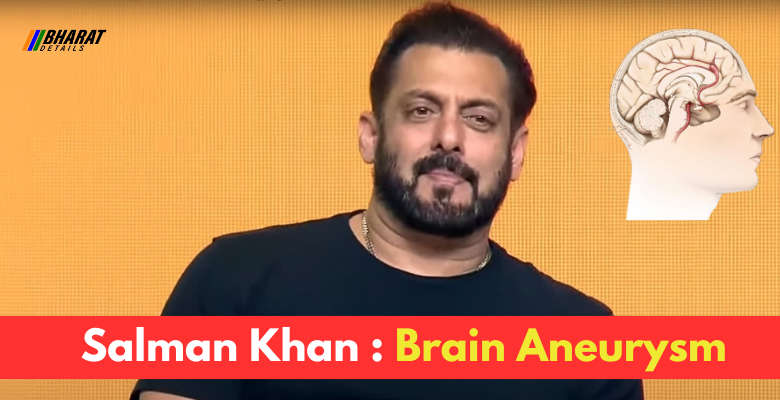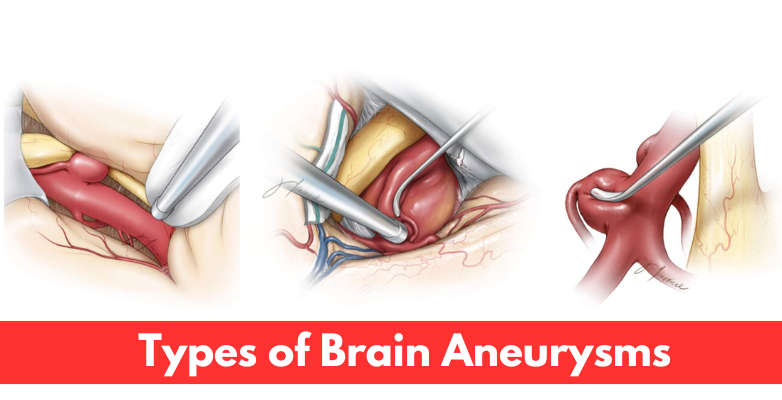Salman Khan Brain Aneurysm Revelation Sparks Concern – What It Means And How Dangerous It Can Be

Contents
Salman Khan Brain Aneurysm Confession – Is It Safe to Keep Working?
When superstar Salman Khan revealed on The Great Indian Kapil Show that he is battling not just one, but multiple serious medical conditions, fans across the country were left stunned. It wasn’t a scene from a movie — it was reality. And it raised an important question: Can someone really continue working with a condition like a brain aneurysm?
“Pasliyaan toot gayi hain, aneurysm hai brain mein, trigeminal neuralgia hai, AV malformation hai – fir bhi kaam kar raha hoon.” – Salman Khan, on The Great Indian Kapil Show.
From fractured ribs to trigeminal neuralgia, AV malformation, and the very serious Salman Khan brain aneurysm, the actor opened up about enduring all of this while continuing his physically demanding profession.
So what exactly is a brain aneurysm? And how dangerous is it?
What Is a Brain Aneurysm?
A brain aneurysm is a balloon-like bulge in the wall of an artery in the brain, caused by a weak spot in the vessel. If it ruptures, it can lead to a hemorrhagic stroke, which is often fatal.
Dr Praveen Gupta from Marengo Asia International Institute of Neuro & Spine explains:
“Aneurysm is a weakness in the artery wall, leading to a balloon-like outpouching. If this ruptures, it causes brain hemorrhage.”

How Common Are They?
Brain aneurysms are more common than you’d think, often discovered accidentally. But not every aneurysm is dangerous.
According to Dr Rahul Gupta, Fortis Hospital Noida:
“An unruptured aneurysm may cause no symptoms. A ruptured one can cause a subarachnoid hemorrhage, a life-threatening emergency with a high risk of death or permanent damage.”
Symptoms to Watch Out For
One of the clearest signs of a ruptured aneurysm?
The worst headache of your life.
Other symptoms include:
- Nausea and vomiting
- Stiff neck
- Blurred or double vision
- Seizures
- Sensitivity to light
- Sudden unconsciousness
- Confusion
Dr Praveen Gupta adds that even unruptured aneurysms can cause issues due to pressure on brain tissues, leading to cognitive or visual disturbances.
How Salman Khan Is Still Working
Despite having a brain aneurysm and additional conditions like trigeminal neuralgia (a nerve condition causing severe facial pain) and AV malformation (an abnormal tangle of blood vessels), Salman Khan says he continues to work.
Appearing on The Great Indian Kapil Show, he said, “I’m still working with all these conditions. I’m not stopping.”
What Are Trigeminal Neuralgia & AV Malformation?
As explained by medical experts:
- Trigeminal Neuralgia: Chronic pain that feels like electric shocks on one side of the face. Even light touch like brushing teeth can trigger pain.
- AV Malformation: A tangled mess of arteries and veins that disrupts blood flow. Often found in the brain or spine and can lead to serious complications.
Who’s At Risk For Brain Aneurysm?
Risk factors include:
- High blood pressure
- Smoking
- Genetics and family history
- Heavy physical activity or gymming
- Age and vascular degeneration
“Gymming or stunt work can increase pressure on arteries and trigger rupture,” warns Dr Gupta.
Other contributing genetic markers include COL3A1, SOX17, 9p21/CDKN2A and conditions like polycystic kidney disease.
Diagnosis & Treatment – Is Surgery Always Needed?
No, not every brain aneurysm needs surgery.
Treatment options:
- Monitoring: For small and stable aneurysms
- Surgical Clipping
- Endovascular Coiling
- Flow Diversion Stents
“We use CT angiograms or digital subtraction angiography (DSA) to diagnose. Sometimes coils or stents are used, or surgical clipping if necessary,” says Dr Praveen Gupta.
Can You Live a Normal Life With It?
Yes — with medical supervision, people with unruptured aneurysms can lead normal lives.
“Salman Khan’s example shows that with regular monitoring and guidance, even those with serious conditions can continue high-energy activities,” says Dr Rahul Gupta.
The Future of Aneurysm Treatment
Advanced research is exploring gene therapy, nanotech and light therapy.
- CRISPR and siRNA to target inflammation genes
- Drug-loaded nanoparticles under testing
- Photobiomodulation therapy (infrared light to heal vessels)
These could redefine treatment over the next few years.
Common Myths About Brain Aneurysms – Busted
Myth: All brain aneurysms will rupture
Fact: Many never do
Myth: Surgery is the only treatment
Fact: Monitoring and non-surgical options exist
Myth: Only elderly get aneurysms
Fact: It can happen at any age
Myth: Rupture = death
Fact: With fast treatment, survival is possible
The Salman Khan brain aneurysm revelation reminds us how fragile our health can be, even for the toughest stars. His resilience is inspiring, but it also encourages people to listen to their bodies and get regular health checks.
“All of this is going on in my life… And yet, I’m still working,” said Salman. We just hope he continues to do so — but with care.

